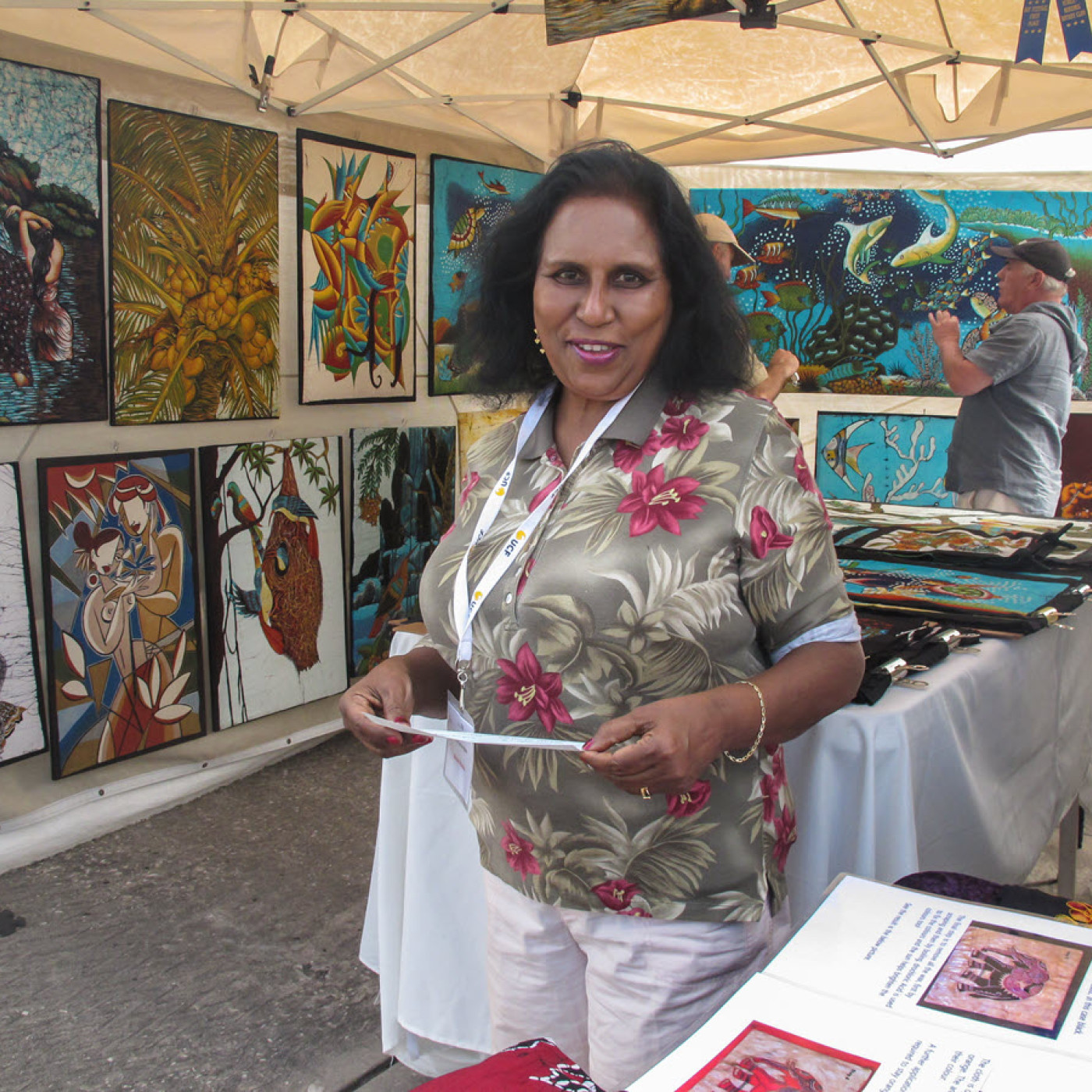Prepare for Your Show What To Consider After Acceptance

After an artist has been accepted, they should begin detailed planning for the event. If it is a new opportunity, the planning should be a bit more detailed.
Outdoor events require special planning to withstand outdoor elements like intense sun, windy conditions, and the possibility of rain. Research the typical weather for the event’s location and be prepared.
Artists often underestimate the damage even a slight wind can do to fragile artwork. Heavy weights are usually required to hold down a tent under windy conditions.
Be sure the sides of your booth can be adapted to changing conditions. The weather can easily change from a cool breezy morning into a sweltering afternoon, and your booth needs to be designed to accommodate these changes.
A booth’s design can have a major impact on its survival during changing weather. A large quantity of fragile glass or artwork pieces that must be hung individually or removed can slow down the process of securing your booth when a storm or high winds approach.
Finding a place to stay often requires reservations, especially if the event is in a popular destination that draws seasonal visitors. If you are bringing a travel trailer, make sure you understand the rules for camping at the event and be sure to request and verify your trailer parking space well in advance of the show’s starting date.
If you have special needs, such as being close to a restroom or requiring electricity for your booth, verify them with event organizers and bring a small generator as a backup. You might require special consideration if you are handicapped and need to have easy access to load and unload your art. Most shows are eager to make accommodations, but it is important to ask and verify requests before you arrive.
Almost Show Time
As the event approaches, artists should take a critical look at photographs of their booth. Look at the various shapes and colors of the booth and artwork and ask if they are compatible. Does anything clash? Is the booth inviting?
If an artist has a regional or local following, it is time to promote involvement in the event through social media. Send emails as well.
Consider the challenges of loading your art and supplies into your vehicle and the effort required to load-in your materials to the booth site and load-out after the show. Invest in a lightweight collapsible cart or hand truck to facilitate transporting your gear a long distance from the parking area to and from your booth.
Go online to research the community hosting the event. Use the information to formulate two or three questions that engage prospects as they approach your booth. Determine if they are locals or visitors. Use their answers to structure an initial question — encouraging them to explore your booth and consider buying your art.
Sales do not end abruptly after a show. Having a batch of business cards or flyers folks can take a photo of makes it simple for visitors to contact you after a show and purchase items long after it has ended.
What To Bring
The two items most often forgotten are extension cords and proper weights. Most venues have no control over where the power sources are located, and they will do their best to meet your request for power. However, that may mean the power source is 5 or 10 feet away from your booth, so it is important to bring a proper extension cord.
Artists frequently underestimate the strength of wind at outdoor venues. Even a slight 10 mph wind can significantly impact a tent, moving items around, knocking fragile artwork off its hangers or tables.
For all outdoor events, artists need to bring heavy weights for each tent corner. They can be heavy concrete weights or large 2–5-gallon buckets that can be filled with water. Water weighs more than 8 pounds per gallon, so buckets and water make an effective light-weight alternative to concrete or sand weights.
Artists should develop personalized checklists that can be used in the weeks before a show to verify no essential item has been missed. The list should be organized based on lead time into those advanced items.
Among the things to include on that list are event and special request confirmations; accommodation reservations; driving or navigation directions; inventory; booth components and weights; rain gear; comfortable shoes; clothing for booth setup and teardown and show clothing; fasteners; sunscreen and a hat; snacks, beverages, and a cooler; candy for visitors; dog treats or a bowl of water; flyers, brochures, and posters displaying work; business cards; sign with a QR code visitors can scan; point-of-sale readers; cash for making change; and a power brick to keep the cellphone charged.
